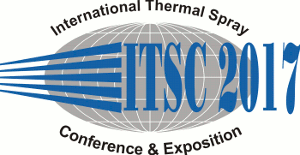
|
5288 |
|
Thursday, June 08, 2017, Hall 27 11:40 AM HVAF Spraying |
|
Comparison between high velocity oxygen-fuel (HVOF) and high velocity air-fuel (HVAF) deposition of FeVCrC-alloy coatings |
|
Giovanni Bolelli* / Department of Engineering "Enzo Ferrari", University of Modena and Reggio Emilia, Italy Marcello Bursi/ Department of Engineering Enzo Ferrari , University of Modena and Reggio Emilia, Italy Heli Koivuluouto/ Department of Materials Science, Tampere University of Technology, Finland Luca Lusvarghi/ Department of Engineering Enzo Ferrari , University of Modena and Reggio Emilia, Italy Ville Matikainen/ Department of Materials Science, Tampere University of Technology, Finland Rinaldo Rigon/ ECOR Research SpA, Italy Paolo Sassatelli/ University of Modena and Reggio Emilia, Italy Petri Vuoristo/ Department of Materials Science, Tampere University of Technology, Finland |
|
FeVCrWMoMnC alloy coatings were obtained by a H2-fuelled Diamond Jet 2600 Hybrid High Velocity Oxy-Fuel (HVOF) torch and by a UniqueCoat M3 Activated Combustion (AC) - High Velocity Air-Fuel (HVAF) torch. Two feedstock powders with different particle size distributions (-53+20 ¼m and -25+5 ¼m, respectively) were employed in both processes. Microstructural studies by SEM+EDX and XRD show that the HVOF process always produces dense coatings; however, the coarse feedstock powder seems preferable, whilst the fine one is extensively oxidized, irrespective of the deposition parameters. HVAF deposition of the fine feedstock, on the other hand, produces dense coatings with almost no oxidation; however, depending on the specific gun hardware settings, defects can be formed due to the preferential sticking of the finest particles to prominent asperities of the growing coating. Cyclone classification to remove particles smaller than 10 ¼m is effective to prevent those defects. The coarse powder tends to undergo limited deformation when sprayed by HVAF, which limits somewhat the interparticle cohesion. Dry sliding wear test were carried out at room temperature under rotating ball-on-disk configuration against sintered Al2O3 in order to investigate the wear resistance and the tribological behavior of the various coatings. Tribological data was compared against reference values for other metal alloy coatings including HVOF-sprayed NiCrBSi and Stellite-6. |